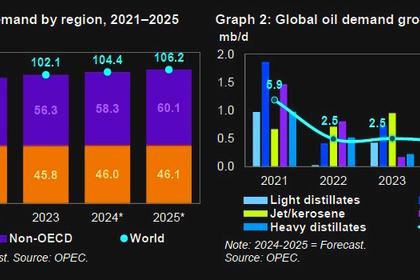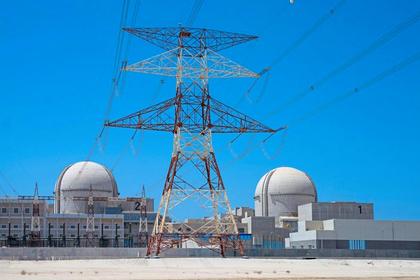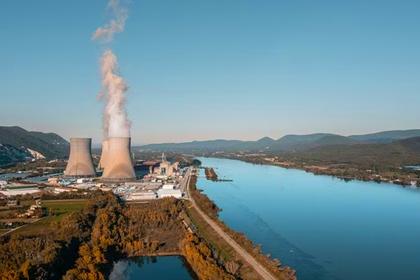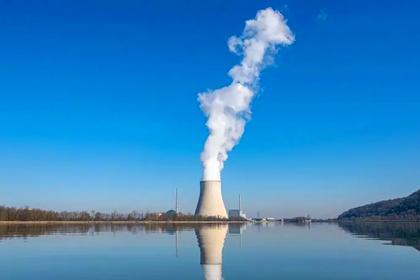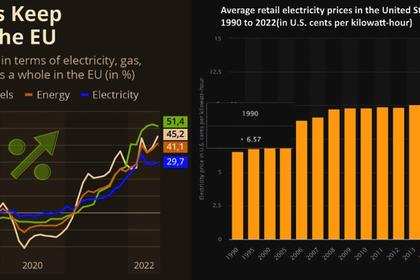
GLOBAL ENERGY INDUSTRY DEVELOPMENT 2024

By KIMBERLY MCKENZIE-KLEMM Industry Technical Writing and Editing, TPGR Solutions, LLC
ENERGYCENTRAL - Jan 29, 2024 - In 2024, Energy consumers have more questions about the state of the Energy Industry's current initiatives than answers. Some areas to focus on include decarbonization, technology implementation, energy storage, and emergency responses. To look at 2024 trends and where the Energy Industry’s expectations rise to the challenges requires examining old practices, new positions, and the present-day Energy Industry status quo. Remaining policies, dropped expectations, and Energy Industry growth factors contribute to the 2024 state of affairs in the Energy Industry. Due to the mish-mash of conflicting decisions in investor-owned Utilities, Public Utilities, and co-op Utilities, reading consistent trending factors becomes a generalized list of probabilities only applicable to Energy Utilities’ partial participation. Energy Industry-wide patterns and positions give up grounding for inferring the continuation of decisions presently on the table and show the leaning of the Energy Industry Community toward addressing solutions for unresolved problems.
The unilateral goal of international agreements, including the World Economic Forum Climate Policy Initiative, is to reach complete decarbonization (carbon emissions freedom) by 2050. Several summits planned for 2024 include The US Decarbonization and Industrial Transition Summit 2024 (scheduled for May), Industrial Decarbonization North America 2024, and Gasworld’s Decarbonization Summit (April 2024). While the Energy Industry is not the largest producer of carbon emissions in the US, the Department of Energy (DOE) Industrial Efficiency and Decarbonization Office is responsible for the allotted current funding to take decarbonization action. On January 25, 2024, this announcement, released by the DOE, stated: “The U.S. Department of Energy (DOE) today announced $171 million for 49 projects across 21 states to reduce industrial greenhouse gas (GHG) emissions and accelerate the development of innovative decarbonization technologies. DOE also announced that applications are open for an $83 million funding opportunity to decrease emissions from hard-to-decarbonize industrial sectors, which represent roughly 30 percent of total U.S. carbon emissions.” While decarbonization efforts in 2024 will not affect much of the total carbon emissions load, decarbonization efforts pre-dating 2024 in green technology and 2024’s Energy Industry commitments for current investments set the sights on gaining ground toward the total decarbonization goal for 2050. Looking at the initiatives, more decarbonization regulations in 2024 will assist the cash outlay for the decarbonization projects and move the Energy Industry closer to attaining “full-green” status.
Upcoming Energy Utility technology for 2024 is addressed well by looking at the reality of working technology expansion instead of guesswork at untried technological developments. Solar power is leading the pack for clean energy technology implementation. “Forty-five percent of the capacity added to the U.S. electrical grid in the first half of 2023 was from solar.” (1) With higher efficiencies than other energy production methods, highly-capable storage, and artificial intelligence (AI) proven integration resilience, solar power looks to be the most embraceable and developed technology for the Energy Industry in 2024. Full-scale use of modern technology in Energy Utilities falls short of expectations in the Energy Industry. Facing higher levels of Digital Utility upgrades in 2024, as the Energy Industry continues to try to keep pace with better science, opens the question of cybersecurity. The National Infrastructure Protection Plan has not been updated since 2013. “In 2022, 10.7% of observed cyberattacks targeted the energy industry, according to the X-Force Threat Intelligence Index 2023.” (2) This trend is expected to rise or continue as viciously in 2024 due to displaced energy distribution, global energy sourcing integration, and energy storage localization. Ransomware program containers continue as the top protection in place, but AI is evolving internal protection measures inherent in Energy Utility operating systems. Not only cyberattacks threaten the maturity of Digital Utilities in 2024. The cost of soaring demands and capital outlay needs should exceed an increase of 50% in a significant portion of the Energy Utilities Community throughout 2024. Due to this, select Energy Utilities rise equipped with digitization and outstrip financially challenged Energy Utility Community participants. “In the United States, there are around 3,000 electric utility companies providing power to more than 140 million customers.” (3) Due to the ratio of consumer to available Energy Utility service, the imbalance of financial expansion availability does not weed out the Energy marketplace. Instead, a widening gap of advanced technology “have” and “have nots” continues to increase, and this gap will not close in 2024. This digitalization gap also adds to the difficulties in enforcing across-the-board new technology regulations.
As the use of solar power expands, so do the Energy Utility options for energy storage uses. Energy storage applications split over arenas where SMART Grid storage is not the only option. Independent use of energy storage is difficult to account and is rising in 2024. Large-scale Energy Utility storage operations, such as compressed air energy storage, are combined with micro-grid intermittent storage from renewable energy like wind and solar power. Stand-alone private energy storage sources are in use for EVs and off-grid homes. Batteries for energy storage have over-produced, exceeding the 2024 beginning marketplace values. Portable batteries' energy storage charges from both carbon-based and green energy sources due to the type of battery built. “U.S. battery storage capacity could increase by 89% by the end of 2024 if all planned energy storage systems are brought online at the targeted time, the Energy Information Administration said…” The capacity increase of battery storage capabilities causes issues with the current marketplace offerings as the technology overturn leaves a requirement to dispose of multiple inferior energy storage battery products. Leaning away from battery reliance, stationary energy storage facilities are expanding. Energy Utility networks and privately off-grid-kept facilities are building new capacity energy storage structures for 2024, partially due to the expansion of home solar power incorporations. “Stationary storage additions should reach another record, at 57 gigawatts (136 gigawatt-hours) in 2024, up 40% relative to 2023 in gigawatt terms.” (4) Top new energy storage developments that are implementation ready for 2024 include flow batteries instead of lithium-ion batteries, gravity-based energy storage systems like pumped hydro, and flywheel and thermal energy storage.
With the rise of cyberattacks, vandalism, and unfavorable extreme weather climate conditions, emergency Energy Utility responses have become crucial to protecting the population. Energy Utilities and teams follow the three (3) “R’s”: Response, Restoration, and Recovery during an energy emergency. An emergency response plan (ERP) must be in place. Recovering from energy emergencies requires infrastructure repairs and grid strength resiliency. Due to increased SMART grid electrification (higher demand), newer tools and strategies are developing to recover from extreme climate damages with careful capital planning for 2024. Distributed Energy Resource (DER) markets have excess emergency power supply capabilities for emergency energy diversion. Communications and data-driven practices are crucial in energy emergencies to give the field and the SMART grid touch-points for action. Avoiding energy emergencies is preferable to enacting an ERP. In 2024, the Energy Industry has a few elements currently necessary to address to avoid higher energy emergency incidences.
- Reduced congestion charges on existing power lines can help avoid energy emergencies and strengthen the SMART grid. Grid ratios of customers to Energy Utilities are increasing in 2024 contributing to electrification of the SMART grid. One way to assist power line decongestion is to build and sustain more infrastructure in the field. Another way is to make sure the SMART grid is resilient through micro-grid resourcing, storage, and self-restoring programming.
- Digital advancements are susceptible to cyberattacks. Further protection of energy data-driven practices includes software upgrades, Energy Utilities system communication patterns, and even AI implementation. 2024 technology Energy Utility uses require further Energy Industry technology investments to protect the original Energy Industry technology. This also increases third-party protection involvement with the Energy Utilities.
- Climate-based weather disasters affect energy SMART grid draw and function. Addressing climate-oriented energy emergencies regionally in 2024 will cause re-consideration of power source type of energy production integration into the Energy Utilities’ systems. “Over the past five years, the U.S. has experienced an average of $18 billion in climate disasters per year.” (5) Damage assessment maps of climate disasters and weather changes must be continually updated and they assist in forecasting energy emergency aversion sourcing by power source type and energy distribution alternatives.
2024 for the Energy Utility Community brings with it trends and positions that are familiar and some that are new. Reviewing the subjects of decarbonization, technology implementation, energy storage, and emergency responses, there are several takeaways. First, decarbonization efforts based on initiatives for 2050 goals pend in 2024 on summits and special funding throughout the year. Most of the decarbonization headway in 2024 will come in the form of new regulations. Next, working technology will upseat new untried technology advances with the greatest 2024 increase of beneficial adaptations belonging to reliance on solar power. AI will be harnessed to protect Digital Utilities against cyberattacks and the imbalance of Digital Utilities and Energy Utilities less technologically equipped remains an unsolved inequity in 2024. Then, switching gears, energy storage has become a priority in the 2024 Energy Industry. Micro-grid and stationary energy storage facilities are incorporated into the 2024 SMART grid decisions. Individual 2024 investments in energy storage are on the rise and energy storage traditional lithium-ion batteries have flooded the marketplace even though they are outstripped by other better energy storage efficiency technologies. Last, to avoid energy emergencies in 2024, some of the unique points to address are more infrastructure and built-in grid resiliency to avoid electrification of the SMART grid, new technology (like AI) and third-party integration into SMART grid security systems to prevent cyberattacks, and mapping global climate changes and weather disasters for emergency response energy sourcing planning. 2024 is a year in the Energy Industry to become aware of current positioning to stay the course toward the trending futures. Instead of implementing shiny, new Energy Industry ideas, Energy Utilities will polish up the 2024 status quo and shore up the staying power of the services pledged for 2024, vaulting next into working to meet the goals laid out for the coming six to twenty-four years.
---
Resources
1. Wakefield, F., EcoWatch; “Top 25 Solar Energy Statistics for 2024,” (November 16, 2023).
2. Bondured, D., Security Intelligence; “2022 industry threat recap: Energy,” (April 13, 2023).
3. Statista; “Electric utilities in the U.S.- statistics & facts,” (December 18, 2023).
4. Sekine, Y., BloomburgNEF; “Energy Storage: 10 Things to Watch in 2024,” (January 25, 2024).
5. Booth, C., Spadoro, J., westMONROE; “Strengthening utility grid resilience for growing climate disaster risks,” (January, 2024).
-----
Earlier:
